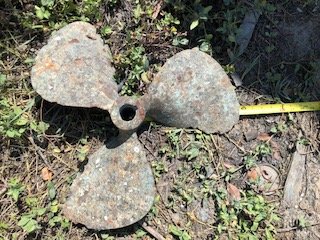There is no problem building an all electric boat. Electric boats have been around for over 100 years. Range is only limited by the number of batteries that can be fitted and how much money you can spend on batteries. The issue is recharging the batteries. As mentioned above a 4.5 kilowatt array can recharge 100 kilowatts of batteries in about 5 days IF those days are 100% cloud free AND the panels can be tilted toward the sun. In the real world with fixed horizontal panels, a percentage of cloudy or even rainy days and seasons other than summer, the solar recharge time is likely to average more like 10 days or even longer. Charging at a marina will most likely be limited to about 12 kilowatts for a standard 50 amp connection (or 3 kilowatts for a 30 amp connection), so you are looking at a minimum of 9 hours plugged in to a 50 amp connection to recharge and about a day and a half from a 30 amp connection.
Now what about range. From what I can find on line a Gulfstar displaces around 22,000 lbs and has about a 40' waterline length. The simple formulae for boat speed versus power at the prop suggest that such a boat will need about 4.5 kilowatts to go 4 knots, 9 kilowatts to go 5 knots, 15 kilowatts for 6 knots and 23 kilowatts for 7 knots. Given a 100 kilowatt battery bank that can be drawn down by 90%, that give the following approximate ranges: 4 kt - 81 nm, 5 kt - 50 nm, 6 kts - 36 nm and 7 kts - 27 nm. These numbers are for flat water and no wind. A bit of chop, a head wind or a foul current with drop the range significantly. This illustrates one of the big limitations of electric boats - they have to go slow to have acceptable range.
Note that I don't want to discourage you. I just want you to be aware of what to expect.
I have one additional comment. One of the benefits often touted for electric boat propulsion is the availability of lots of torque at low rpms. Unless you are dealing with a purpose built electric boat that can accommodate a LARGE propeller, you simply can't use that torque. That is particularly true for a diesel to electric conversion where the prop size will be quite limited - i.e., the amount of torque you can utilize is also severely limited by the prop(s). Consequently, the availability of lots of torque at low rpms is meaningless for a diesel to electric conversion of a trawler.


